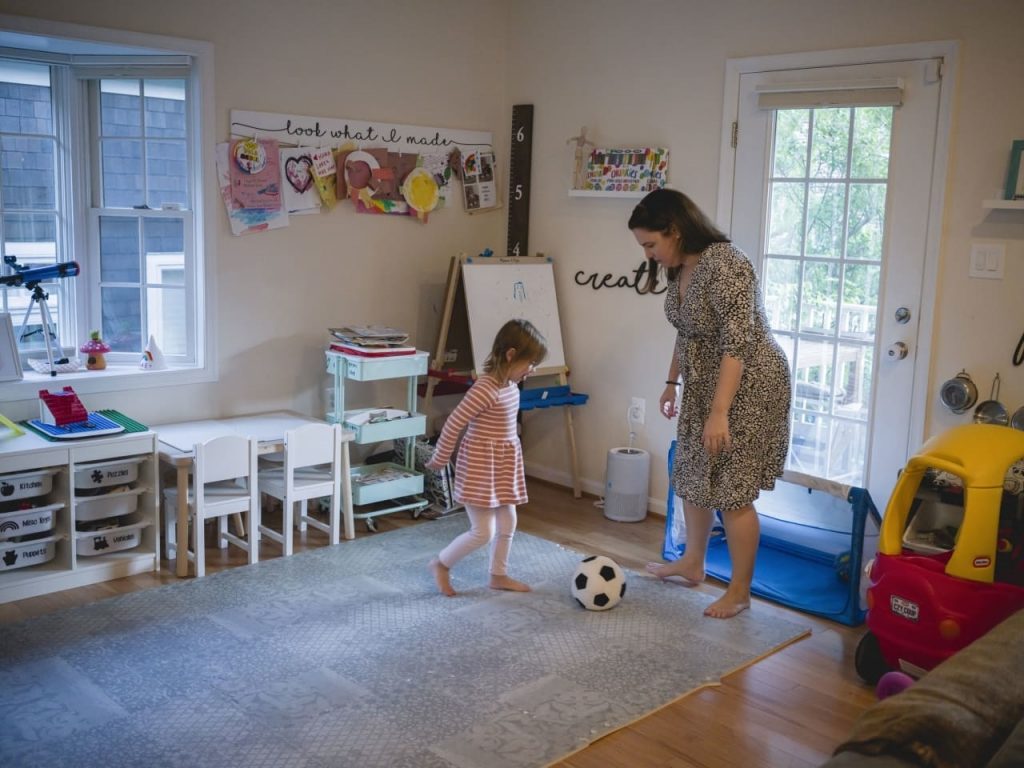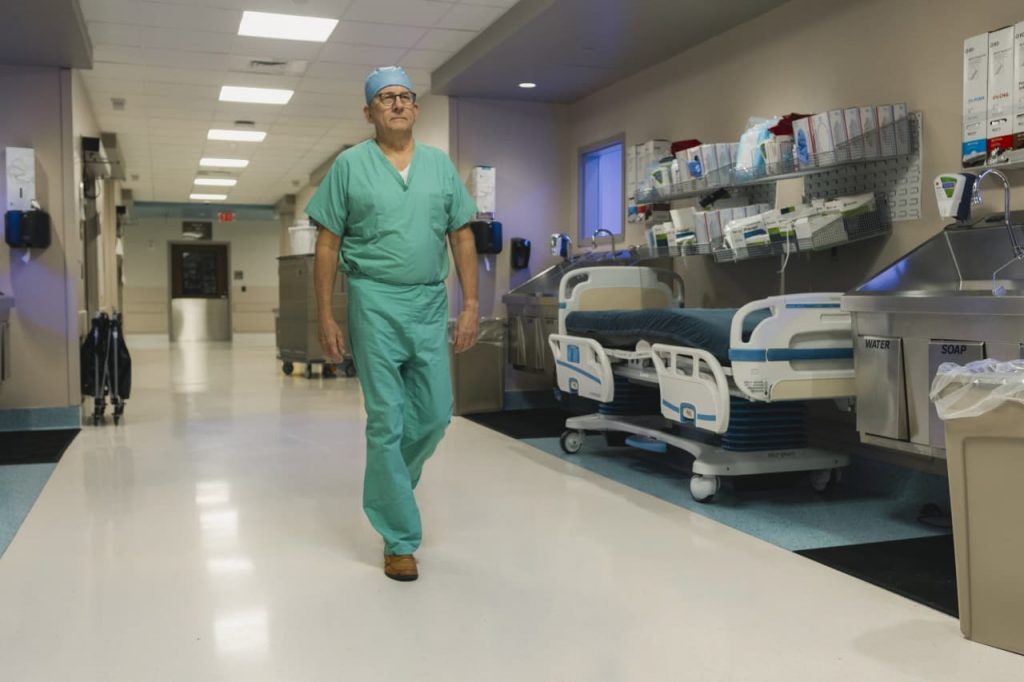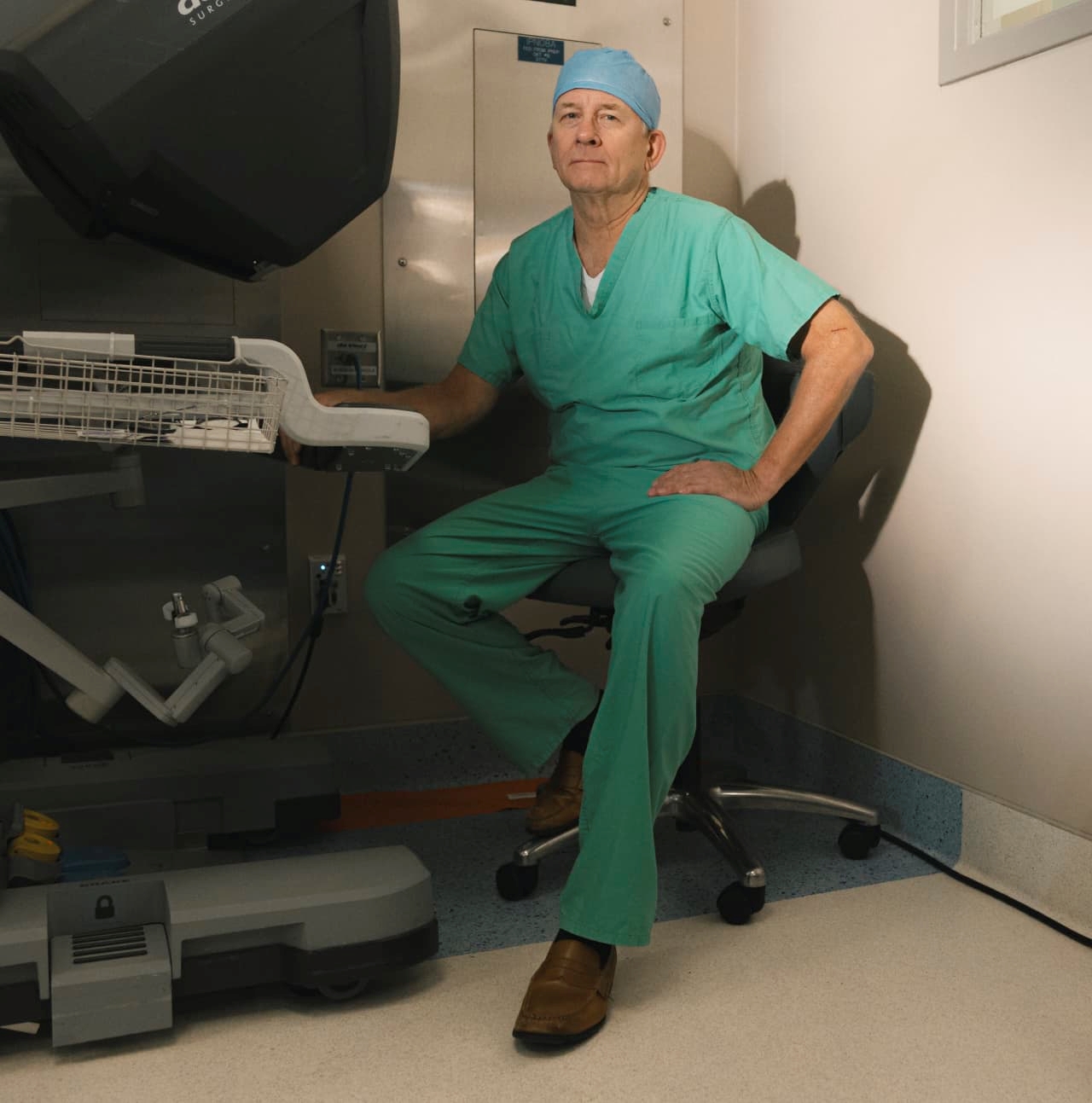There’s a question dividing the medical practice right now: Is being a doctor a job, or a calling? For decades, the answer was clear. Doctors accepted long hours and punishing schedules, believing it was their duty to sacrifice in the name of patient care. They did it knowing their colleagues prided themselves on doing the same. A newer generation of physicians is questioning that culture, at times to the chagrin of their older peers.
Dr. Jefferson Vaughan , 63 years old, has worked as a surgeon at Jupiter Medical Center in Jupiter, Fla., for 30 years, and is on call for the emergency room five to seven nights a month. He says he shares the duty with a handful of surgeons around his age, while younger colleagues who practice more specialized surgery are excused.
“All us old guys are taking ER call, and you got guys in their 30s at home every night,” he says. “It’s just a sore spot.”
Nearly half of doctors report feeling some burnout, according to the American Medical Association . Work-life balance and predictable hours shouldn’t be at odds with being an M.D., say doctors who are pushing against what they view as outdated expectations of overwork.
Dr. Kara-Grace Leventhal , 40, is a hospitalist, a job that offers set hospital shifts caring for patients and the ability to clock out at a fixed time.
“We have to take care of ourselves in order to take care of other people,” says Leventhal. Many in her generation, she notes, are also caring for young children and elderly parents.
Changes in healthcare mean a growing number of physicians now work as employees at health systems and hospitals, rather than in private practice. Electronic paperwork and other bureaucratic demands add to the stress and make the profession feel less satisfying, they say. More physicians are pursuing temporary work .
This debate—and its consequences—will play out for years. In interviews with nearly two dozen physicians, many said that medicine’s workaholic culture was overdue for a correction. Others said when physicians are less committed to their work, their peers and overall quality of patient care can suffer.
The balancing act
Physicians work an average of 59 hours a week, according to the American Medical Association, and while the profession is well-compensated—the average physician makes $350,000, a recent National Bureau of Economic Research analysis found—it comes with high pressure and emotional strain.
When Leventhal started her current job at Johns Hopkins Hospital in Baltimore in 2021, she says a superior told her sick time could be used only in extreme circumstances—for example, if she had been in a car crash on the way to work.
It was a familiar mindset. When pregnant during her residency, she nearly skipped a scan. Leventhal was due to present patients to her attending physician, and “didn’t want to draw more attention to myself being a mom,” she says. She made it to her appointment, then was rushed to an emergency C-section that day. Her obstetrician said that had Leventhal not come for the scan, she would have lost her daughter.

Leventhal plays with her 4-year-old daughter at home after work. She and her peers at Johns Hopkins Hospital have lobbied to make it easier to take time to care for family. Photo: Greg Kahn for WSJ
Leventhal and her peers at Johns Hopkins lobbied to change their sick-day policy, and now, she says, doctors in her group are permitted to take sick time as needed without explanation. Her group, she says, has doubled the number of on-call doctors to cover more absences.
The hospital didn’t respond to requests for comment.
In Florida, while working with medical students at Jupiter Medical Center, Vaughan has been put off when they’ve called out for reasons ranging from colds to bachelor parties. None of those would have been acceptable during his training, he says.
“I’m not saying they’re wrong in their desire for a work-life balance,” he says, “but there was a time when the patient came first.”
Jupiter Medical Center said it would continue to embrace “the needs of a multigenerational workforce,” and said that it was deeply grateful to its physicians for their commitment to working together.
M.D. worker bees
More young doctors are choosing to join healthcare systems or hospitals—or larger physician groups. Among physicians under age 45, only 32% own practices, down from 44% in 2012. By comparison, 51% of those ages 45 to 55 are owners.
Owners have more autonomy, but also increasing overhead costs. Vaughan, who sold his private practice in 2011, saw his malpractice insurance premiums increase to $65,000 a year.

Vaughan says it has become harder than ever for physicians to own their own practices, with more doctors—including himself—becoming employees. Photo: Mikaela Martin for WSJ
Dr. Joseph Comfort , 80, sold his anesthesiology practice in 2003, frustrated by rising billing tussles with insurance companies. He now works part time as an internal medicine doctor at a small concierge clinic in Sanford, Fla.
“We’ve been ripped down off our pedestals,” he says.
For generations, Comfort says, doctors accepted being at the mercy of their pager and working long hours as the cost of doing business. “We took it because we considered ourselves to be masters of our own fate,” he says. “Now, everything’s changed. Doctors are like any other employee, and that’s how the new generation is behaving.”
They also spend far more time doing administrative tasks. One 2022 study found residents spent just 13% of their time in patient rooms, a factor many correlate with burnout.
Dr. Joel Katz , who led the residency program at Brigham and Women’s Hospital for two decades, has seen such attitudes evolve firsthand.
For years, doctors often referred to their work as a calling. Among some residents, that is now considered “very triggering and offensive,” says Katz, 66, who recently became senior vice president for education at Dana-Farber Cancer Institute. “It’s code word for being taken advantage of.”
Today’s cohort understandably feels more like widgets in a system and is inclined to use benefits such as sick time, he says, but doing so can pose challenges for patients, who may end up with less consistent care.
In San Francisco, Dr. Christopher Domanski —a first-year resident who had his first child earlier this year—says he’s interested in pursuing a four-day workweek once he’s completed his training.
“I’m very happy to provide exceptional care for my patients and be there for them, but medicine has become more corporatized,” says Domanski, 29. Though he’s early in his medical career, he’s heard plenty of physicians complain about needing to argue with insurance companies to get their patients the treatments they need.
“It’s disheartening,” he says.
Avoiding burnout
Residents’ work and rest hours have been subject to increasing regulation by the Accreditation Council for Graduate Medical Education, whose guidelines state that they can work up to 80 hours a week, in shifts as long as 24 hours.
Such rules have helped foster more of a shift mentality among younger physicians, says Dr. Maria Ansari , chief executive of the Permanente Medical Group and the Mid-Atlantic Permanente Medical Group.
“They have a different mindset and approach about protecting their personal time,” she says, noting that the groups she leads have seen a jump in young physicians interested in virtual work. Such hires now account for around 10% of new recruits a year.
Ansari, 55, says she applauds efforts to stop sleep deprivation among doctors, especially since it can lead to medical errors. Yet it’s harder to replicate her generation’s learning experience, she says. “A lot of my learning came in the wee hours of the morning and following that patient for 45 hours. A lot of crises happen after hours.”
New technology has the potential to promote physician well-being, she says, noting that the 24,000 physicians across all Permanente Medical Groups were given access to artificial-intelligence tools this summer. The software helps transcribe conversations with patients and can reduce time physicians spend completing electronic notes.
That’s important, says Dr. Mary Leung , 47, an oncologist on Long Island, N.Y., who also works as a life coach for burned-out doctors. “A lot of physicians feel like they’re charting machines or clickers,” she says, adding that many wind up doing paperwork at night because they don’t have time during the day.
Dr. Christopher Wassink , a 58-year-old anesthesiologist in Naples, Fla., says lately he has seen more young doctors seeking three- or four-day schedules. It can make covering nights and weekends more difficult, he says, and he and his peers privately wonder if it takes a toll on young practitioners’ competency.
Still, the father of four says he understands where they are coming from. For most of his career, he’s regretted becoming a doctor. In 24 years, he never called in sick—mainly out of guilt.
“I’m sympathetic,” he says. “I don’t think you should spend your life at work, no matter what it is.”
Write to Te-Ping Chen at Te-ping.Chen@wsj.com



